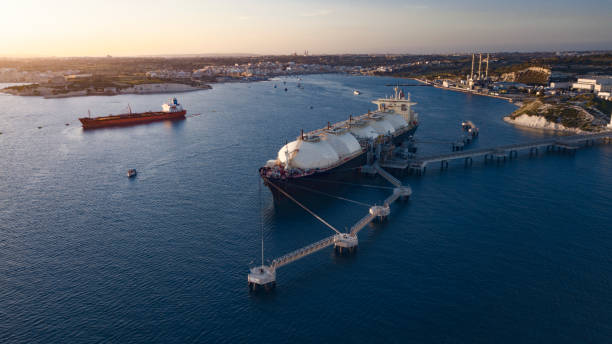(ATF) India, the world’s third-largest energy consumer after China and the US, and its third largest green-house gas emitter (GHG), is pulling out all the stops in efforts to drastically reduce its carbon footprint, including a major shift to a natural gas-based economy.
On Thursday, the nation drew one step closer to that goal when oil minister Dharmendra Pradhan said Indian companies will spend the equivalent of $1.35 billion over three years to build 1,000 liquefied natural gas (LNG) vehicle fuelling stations along main roads, industrial corridors and mining areas.
“Even if the LNG vehicle segment achieves 10% market share in a fleet of 10 million trucks, it will have a positive impact on reducing emissions and substituting crude,” Pradhan said at a foundation-laying ceremony for 50 stations.
He said that companies will set up LNG fueling stations along a 6,000km network of highways linking the four main metropolitan areas, while the transport sector could utilise up to 25 million cubic metres a day equivalent LNG in its initial phase.
“In times to come, there will be an LNG station at every 200-300 km on the GQ [Golden Quadrilateral highways] and on all major highways,” he said.
Read More Related Stories on ATF
- Rise of EVs spells end of the oil era
- Australia and South Korea team up on rare earth production
- China’s oil thirst outweighs its recent hydrocarbon discoveries
- China to start big oil and gas project in South China Sea
The Golden Quadrilateral is a national highway network connecting most of India’s major industrial, agricultural and cultural centres. It forms a quadrilateral connecting the four major metro cities of India – Delhi, Kolkata, Mumbai and Chennai.
“Expansion of city gas networks, laying of trunk pipelines, building LNG (import) terminals, raising of domestic production of gas, simplification of tax structure and a uniform and simple tariff structure are all part of that plan,” he said.
India’s move to set up more LNG stations could see the country vie with China, which already has an estimated natural gas vehicle (NGV) fleet of some 6 million vehicles, around 3.7% of the country’s total, with that number projected to increase in the future.
The use of LNG in heavy vehicles will cut fuel costs by 40% compared with diesel and help contain inflation, Pradhan said. He urged automobile makers to look at producing LNG-compatible vehicles.
Overall LNG usage will also help India meet its Paris accord commitment to cut greenhouse gas emission intensity of its gross domestic product by 33% to 35% below 2005 levels by 2030, he added.
Taming diesel usage
Dirty-burning diesel, however, remains the most-consumed oil product, accounting for nearly 40% of the country’s petroleum product consumption yearly. It’s used primarily for commercial transportation and, to a lesser degree, in the industrial and agricultural sectors.
Earlier this year, India’s diesel usage saw a marked contraction due to economic headwinds from the Covid-19 pandemic. Since then, however, India’s diesel habit has come roaring back. During the first two weeks in October, diesel sales by the country’s top three fuel retailers rose 8.8% from a year earlier to some 2.65 million tons. Volumes sold also increased 24% higher over the same period in September. Some of the increase has been attributed to upcoming seasonal festivities.
India’s ability to reduce its GHG emissions, in large part, hinges on pivoting away from diesel and gasoline needed for motor vehicles, as well as coal used for power production to cleaner burning fuels and renewables.
To that end, India plans to increase solar and wind capacity to 175 gigawatts (GW) by 2022 and 450 GW by 2030, while it has earmarked natural gas, the cleanest burning fossil fuel, to increase to 15% of its energy mix by 2030, from a current 6.2% usage.
Since much of the focus is to make India a natural gas-based economy, building 1,000 new LNG fueling stations with the likelihood that more will be forthcoming, fits into its LNG build-out plans.
In 2019, India was the world’s fourth-largest LNG importer, importing about 1.2 trillion cubic feet (tcf), around 7% of global trade, according to the US Energy Information Administration (EIA). During the past two years, India has imported 25% more LNG.
So far this year, India has already been taking advantage of multi-year low prices in the LNG spot market in Asia, coming from both a prolonged overhand of the fuel due to overproduction in the US and Australia, as well as demand destruction from the Covid-19 pandemic. However, even India’s LNG buying appetite slowed earlier this year due to a Covid-19 national lockdown.
Prices for LNG dipped beneath a market destabilising $2/MMBtu price point in May, well beneath most producers’ break-even points. Since then, prices have recovered to more than $6/MMBtu amid forecasts for colder temperatures in North Asia, which represents nearly two-thirds of global LNG demand. However, after peak winter season LNG spot prices in Asia historically retreat back to lower level price points.
Earlier this year, India commissioned its sixth LNG import terminal.
There are now four LNG import terminals under construction in the country. They are all expected to come online by 2023.
However, the country still needs to build much-needed pipelines to move that gas from coastal zones where it’s received from tankers to other parts of the country, including new LNG fueling stations.
























